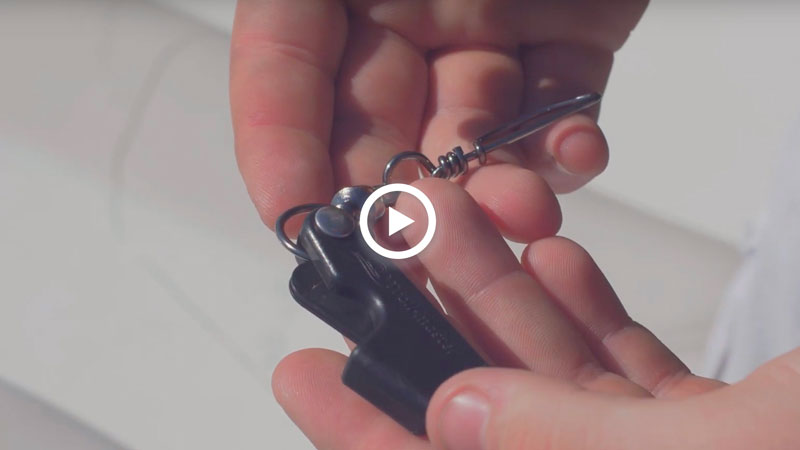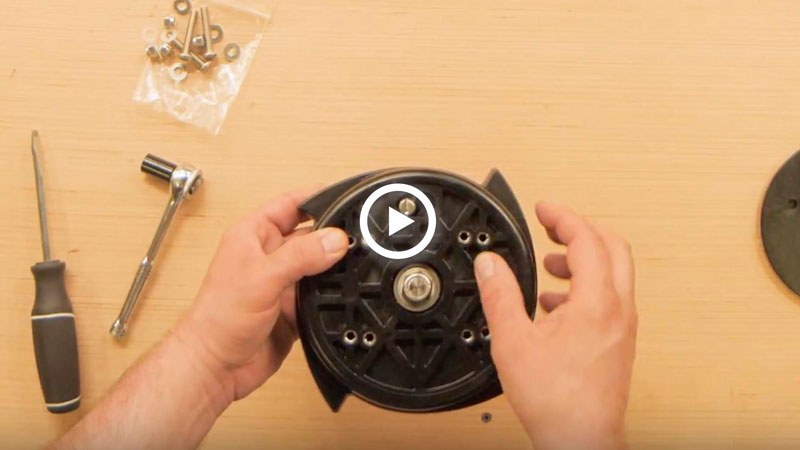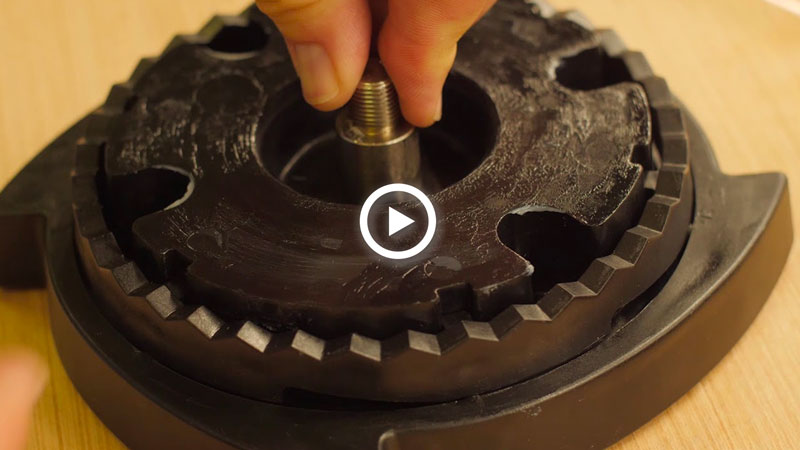FAQ'S
We recommend using Hydrodynamic line releases. These line releases are specifically engineered to reduce water resistance. The hydrodynamic design minimizes the turbulence allowing for natural bait / lure presentation. Lower resistance results in decreased blow-back. Troll-master offers different configurations of the releases:
The trolling speed and depth really depends on the species of the fish being targeted. Please refer to the best practices, local forums, fishing magazine publications and fellow angler’s advice for your local area.
Your Seahorse downrigger system is constructed of the most durable materials available. Periodic Servicing and maintenance will assure trouble-free operation and long product life. After each day of use, especially if used in saltwater environment, the downrigger and all of the exposed metal parts, boom, boom tip an especially the cable should be should be thoroughly washed off with fresh water.
The boom pulley and swivel assembly friction areas should be sprayed with anti-corrosion oil every few weeks. The threaded portion of the hold down knob should also be sprayed with anti-corrosion oil every few weeks.
At least once a season, lubricate the inside of your Seahorse downrigger. Use Parts diagram as a guide to remove the spool and gain the access to the internal components.
We recommend using marine grease for the internal lubrication.
NOTE: Do not use any lubricants on the drag system components.
This is probably the most common question we are asked.
Short answer is – IT ALL WORKS! It only depends on the personal preference and the purpose.
Stainless Cable is probably the most versatile, rigid and dependable downrigger line. All our Seahorse downriggers come spooled with Stainless cable right out of the box. While it has many advantages – there are few disadvantages when compared to either Braid or MONO. Stainless cable requires more maintenance (anti-corrosion treatments), Also it “hums” when in use. It generates a humming noise as it slices through the water. (guitar string effect).For people who prefer Braided Line – we manufacture a replacement Braided line in 4 colors. Braided line has better visibility, maintenance free and easier to handle. It is not as tough and teeth proof as Stainless cable of course.
Monofilament line has many disadvantages: one of the main issues with Mono – it stretches when in use and then shrinks back when its on the spool. In order to prevent equipment damage, you should always unwind the spool without the weight to let the nylon shrink back to its original shape and then reel it back on the spool after each use. Another disadvantage is significantly larger diameter and water resistance that contributes to the increased drag. However, many professional anglers choose mono for competitive applications. This is because mono is softer and if a fish that hits deep and runs toward the boat and wraps or rubs the line on the MONO – it will most likely sever the Mono and the angler will lose the weight but will land a potentially tournament winning fish.
There are many factors that go into consideration while determining mounting solution. For occasional users we recommend using a gimbal mount. Gimbal mount adapter provides anglers with a great alternative to the conventional bolt-through mounting solutions using boat’s existing flush mount rod holders. If you use your downriggers all the time – we recommend bolt-through installation. Select an appropriate spot on your gunwale or transom. Make sure to read the installation instructions for the product being installed. Use appropriate stainless hardware.
Mounting your downrigger as close to the stern as possible will reduce the possibility of getting your wire caught in the prop while turning.
Downriggers are great tools while trolling, however when not in use they take up extra space and seem to always be in the way… We recommend equipping your boat with downrigger storage solution.
Simply pick a spot where your downrigger would be out of the way but easily accessible and install secondary mounting plates. This can be inside your console, larger storage compartments, under the hard top or inside your cabin. The mounting plates can be even installed up side down for better space utilization.
All our downriggers come equipped with the standard 24-inch boom. Typically, this should provide enough clearance in order to utilize your downrigger. However, we offer Seahorse boom extension kit that will convert your standard 24-inch boom into 46-inch boom. Installation is super easy – takes under a minute. Extending the length of the boom of your downrigger will result in multiple advantages:
This usually happens when you either lowering your downrigger weight too rapidly or if your boat is not moving forward. Make sure you start trolling motion before lowering your gear. Reduce the speed of descend by engaging the drag system. Never allow your downrigger gear to free-spool.
You can spool your Seahorse downrigger with 600 ft of stainless cable.
In the saltwater environment we recommend changing out your cable every 3 years.
If fishing freshwater – every 5 years. Please, closely examine the condition of your downrigger cable on a regular basis especially near the swivel terminator. This is where majority of the cable failures occur. If your cable is kinked or frayed, remove the damaged section and re-rig your cable terminator. Troll-master strongly recommends that you use wedge style cable terminators with ball bearing snap swivel. We offer replacement Cable Terminator kit.
Your Seahorse downrigger is equipped with the drag system that will start paying the line out if your trolling weight gets stuck. Never have your drag system settings too tight for that reason.
If your weight is snagged on the bottom and downrigger line is paying out – stop the boat as soon as possible and get all the lines out of the water. You will have to back up over the weight in the opposite direction. It is very important to get all the lines out of the water to prevent gear getting tangled in your propeller(s). Once you backed over the weight – attempt to retrieve it using the crank handle. Never attempt to retrieve a weighted or snagged downrigger cable by hand. Wave or boat motion could cause serious injury. If unable to retrieve the weight - you will have to cut your cable. Always keep a pair of wire cutters handy and be careful not to lean over the boom. Cutting tensioned wire may cause the downrigger boom to kick up unexpectedly.
The short answer is yes, Z-wings and Planers are successfully used with Seahorse downrigger systems. However, you should exercise caution when considering Z-wing applications for High speed trolling. The design of the Z-wing is basically a hydro-planer the faster the speed – the more force down it generates. There are many factors such as sea conditions, trolling speed and boom length – all have to be considered when employing Z-wing or Planers.
Yes, absolutely, we have many customers who are using Seahorse downriggers for small to medium size dredge pulling as well as deep trolling.
When fishing with downriggers we strongly recommend to have spare accessories with you on the boat. At least one spare trolling weight, Cable terminator kit and couple of line releases. Also, make sure to have a spool of replacement Stainless Steel cable or Braided Downrigger line in case you will have to re-spool on the water.
No, we strongly advise to disconnect and remove your trolling weights while trailering or travelling on the water. Line releases should also be removed and lines should be tensioned. Do not leave weights attached. Always remove and place in a proper holder. Loose weight can cause a serious injury and significant damage to the vessel.
The Retrieve rate is approximately 1.5 feet per crank revolution.
We recommend using 8-10 lbs weights when trolling. Our equipment is tested up to 50 lbs. however, there is absolutely no reason to increase your trolling weights. This causes unnecessary stress on all the equipment, the mounting surface of your boat and on the angler handling the weights. There are many factors such as sea conditions, trolling speed and boom length – all have to be considered when increasing the trolling weights.



